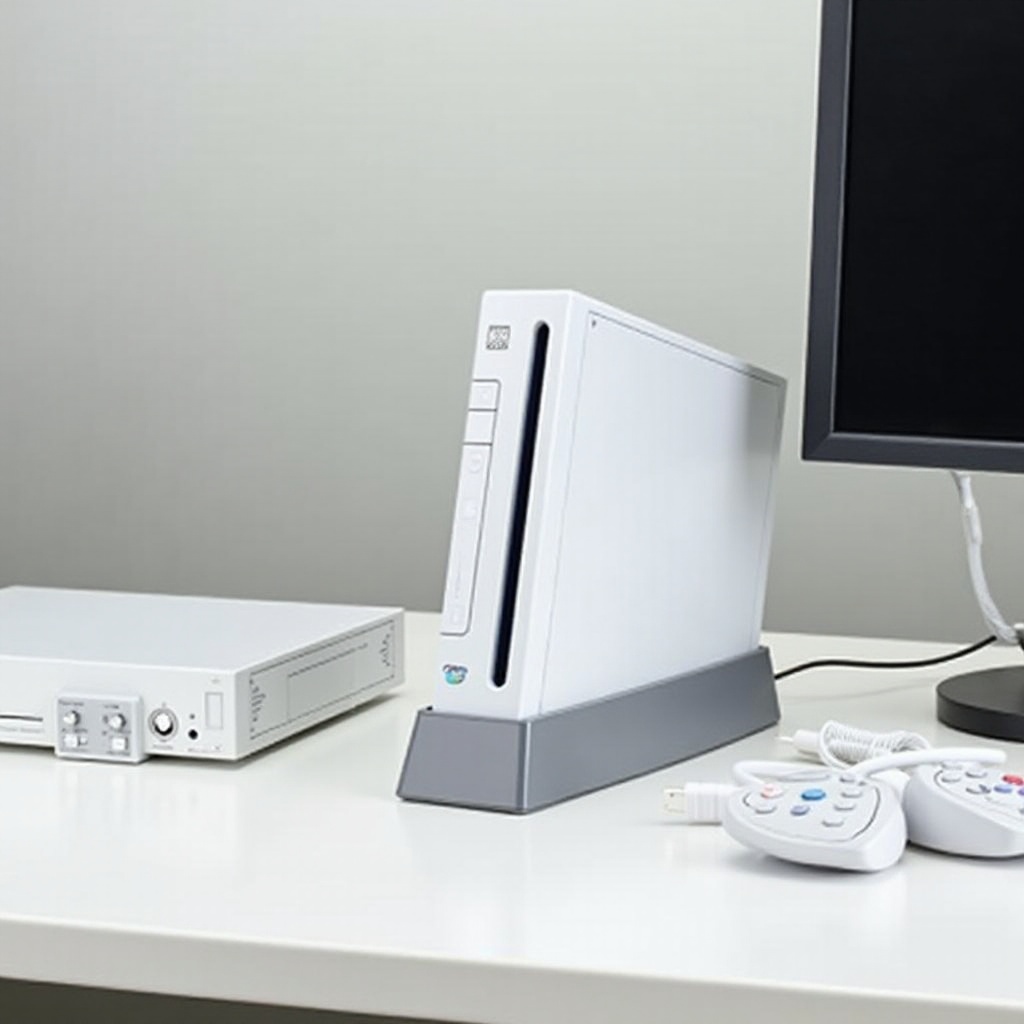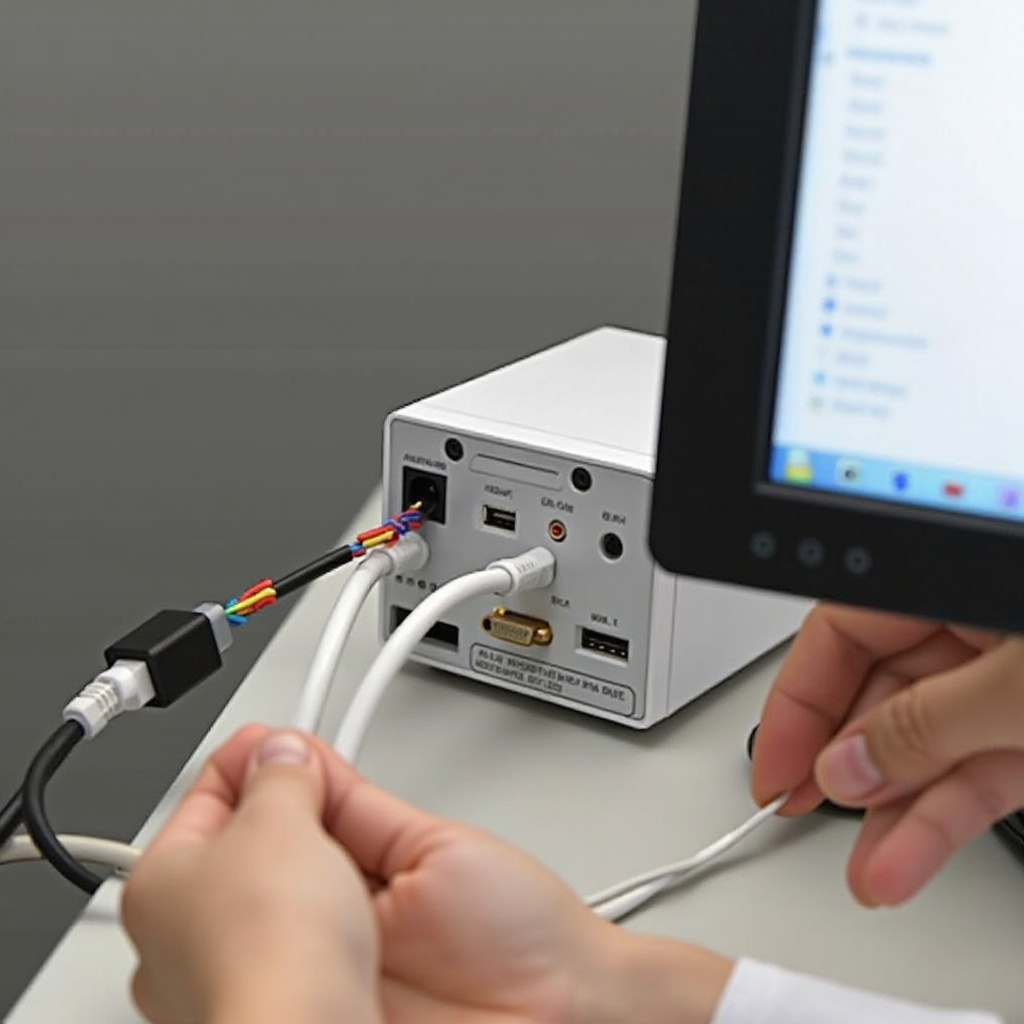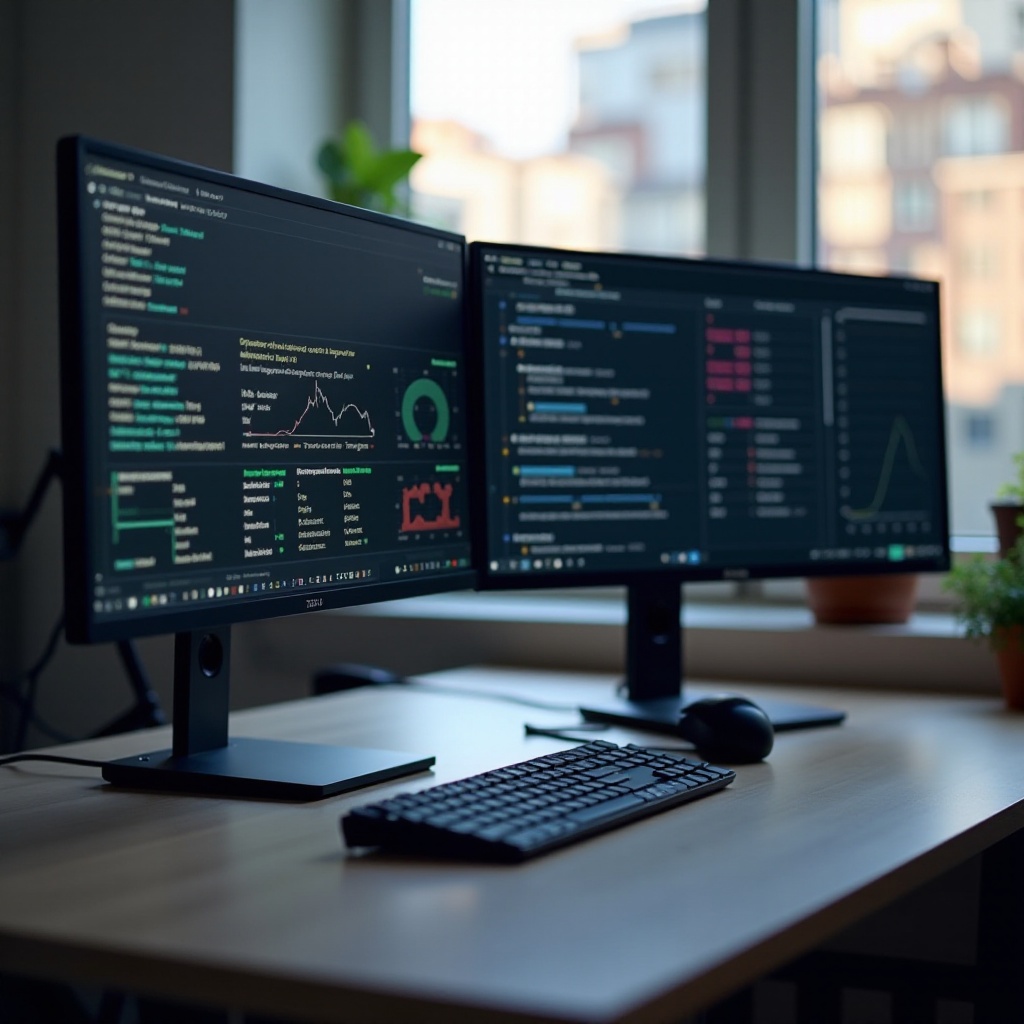How to Connect a Wii to a Computer Monitor
Introduction
Connecting a Wii to a computer monitor can seem daunting, but it’s a task you can accomplish with ease. Whether you want to enjoy your favorite Wii games on a larger screen or you don’t have access to a television, this guide will walk you through the process. By the end of this guide, you’ll have your Wii seamlessly connected to your computer monitor, ready for your next gaming session.

Understanding the Connections
To connect your Wii to a computer monitor, it’s essential to first understand the types of connections involved. The Wii is an older console that primarily uses composite A/V cables, which are different from the HDMI or DisplayPort connections commonly used by modern computer monitors. Composite A/V cables include three plugs: yellow for video, and red and white for audio.
Computer monitors, however, typically have either HDMI, DVI, VGA, or DisplayPort inputs. Since these are not directly compatible with the Wii’s composite A/V output, you will need an adapter that can convert the signal into a format that your monitor can accept. This means identifying the ports available on your monitor and choosing the right adapter is crucial for a successful connection.
Necessary Equipment
Before you start, gather the necessary equipment. Here’s a list of items you’ll need:
- Wii Console: Ensure your Wii console is in good working condition.
- Composite A/V Cable: This is the standard cable that comes with the Wii, consisting of yellow, red, and white plugs.
- Adapter: Depending on your monitor’s available inputs, you may need an adapter to convert composite A/V to HDMI, VGA, or DVI.
- Composite to HDMI Adapter: If your monitor supports HDMI, this will be your most straightforward option.
- Composite to VGA Adapter: For monitors with only VGA inputs.
- Composite to DVI Adapter: If your monitor only has DVI and no HDMI ports.
- Audio Solution (Optional but recommended): If you are using an adapter that doesn’t carry the audio signal, you might need external speakers or a 3.5mm audio converter.
- Power Supply for Adapter: Many adapters require their own power source, usually via a USB connection.
Having these items on hand before beginning the setup will ensure a smooth connection process without unnecessary interruptions.
Step-by-Step Connection Process
Setting up your Wii to a computer monitor involves several steps. Follow this guide to make the process as straightforward as possible.
Identifying the Correct Ports on Your Monitor
- Locate the Input Ports: Check the back of your monitor to find the input ports. Monitors will typically have ports labeled as HDMI, VGA, DVI, or DisplayPort.
- Determine Adapter Needed: Based on the ports available on your monitor, choose an appropriate adapter (composite to HDMI, composite to VGA, or composite to DVI).
Connecting the Wii to the Monitor Using an Appropriate Adapter
- Plug in Composite Cables: Connect the yellow, red, and white composite A/V plugs from the Wii to the corresponding ports on your chosen adapter.
- Power up the Adapter: If the adapter requires external power, connect it to a USB port or power source.
- Connect to Monitor: Use the output cable from your adapter and connect it to the appropriate port on your computer monitor.
Ensuring the Monitor is Set to the Correct Input
- Turn On Your Monitor: Switch on your monitor and navigate to the input/source selection menu.
- Select the Correct Input: Choose the input that matches the adapter connection (HDMI, VGA, or DVI).
- Power the Wii: Turn on your Wii console. You should see the Wii startup screen if all connections are correct.
Adjusting Settings
For the best gaming experience, you may need to adjust settings on both your monitor and Wii.
Adjusting Monitor Settings for Optimal Display
- Resolution Adjustments: Set your monitor to the recommended resolution for the best image quality.
- Color Calibration: Adjust the brightness, contrast, and color settings to ensure the image is clear and vibrant.
Configuring Wii Settings for Best Experience
- Wii Display Settings: Navigate to the Wii settings menu, and adjust the screen resolution settings to match your monitor’s capabilities.
- Audio Settings: If using external speakers or a different audio setup, ensure the sound settings on your Wii are configured to output correctly.

Troubleshooting Common Issues
Sometimes, you may encounter issues during the connection process. Here are some common problems and their solutions.
Dealing with No Input Signal
- Check Cable Connections: Ensure all cables are securely connected.
- Try a Different Input Source: Cycle through the monitor’s input sources to ensure you’re on the correct one.
Troubleshooting Audio Problems
- External Speakers: If using external speakers, ensure they are powered on and correctly connected.
- Adapter Settings: Some adapters have audio output settings, ensure they are configured correctly.
Resolving Display Quality Issues
- Check Adapter Quality: Cheap adapters might degrade image quality. Invest in a good-quality adapter.
- Monitor Settings: Fine-tune the monitor’s resolution and display settings for a clearer picture.

Conclusion
Connecting your Wii to a computer monitor can be an enjoyable project. By following this step-by-step guide, you should be able to successfully connect your Wii and enjoy your favorite games on a larger screen. Remember, the right equipment and a bit of patience go a long way in ensuring a smooth setup process.
Frequently Asked Questions
Can I use a VGA cable to connect my Wii to a computer monitor?
No, a direct VGA cable will not work. You need a composite to VGA adapter to convert the Wii’s output to VGA.
Do I need to buy any additional equipment to get audio from my Wii on a computer monitor?
Yes, if the adapter doesn’t carry audio, you may need external speakers or an audio converter to get sound.
Is it possible to connect my Wii to two monitors at the same time?
Yes, but it requires a splitter and additional cables. However, this setup might degrade the video quality.

